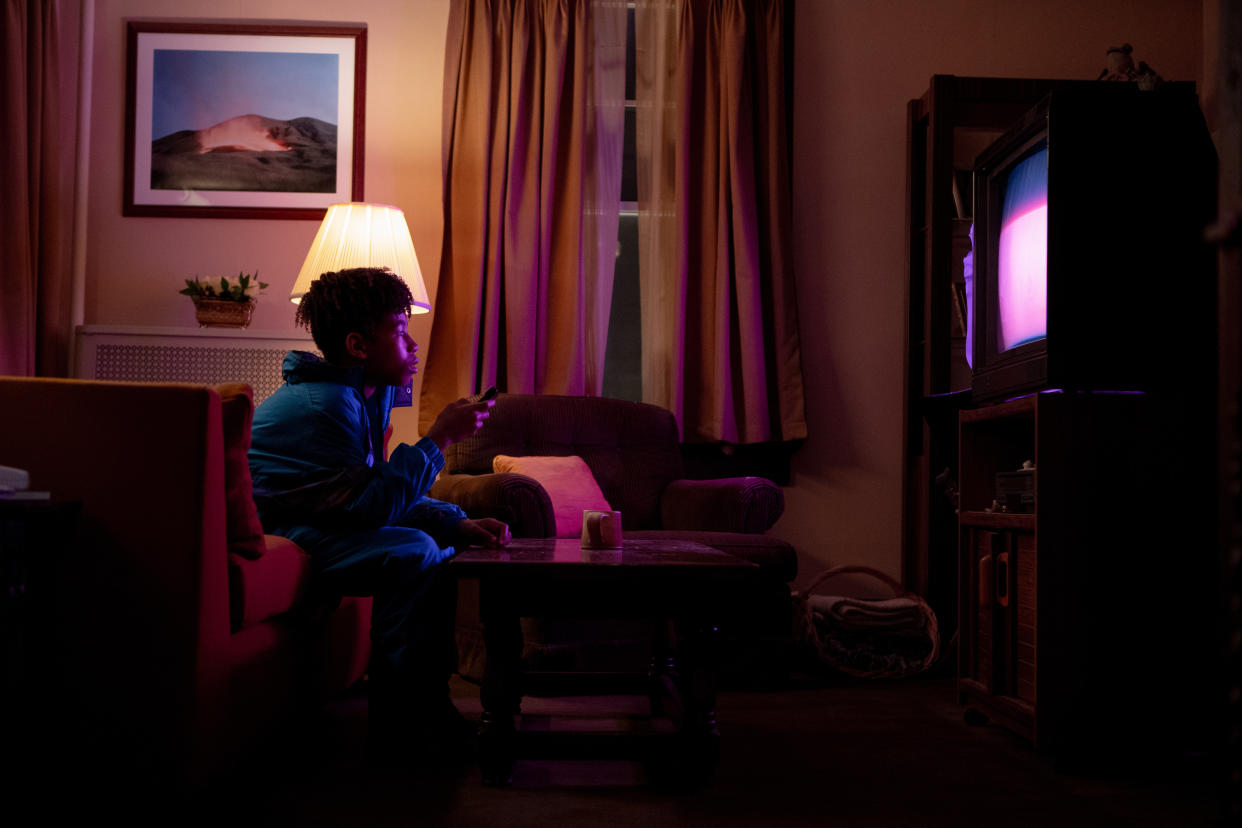‘I Saw the TV Glow’ Director Jane Schoenbrun Shares a Theory for Why We’re So Nostalgic for the ’90s

There’s a moment late in “I Saw the TV Glow” when Owen (Justice Smith), now an adult, watches an episode of “The Pink Opaque,” the ’90s TV series that obsessed him in high school. The supernatural teen genre series now looks and feels completely different to him: Gone is the supernatural mystery, the seductive production values, that magical glow of a vicarious world.
In the cinematic world of Jane Schoenbrun’s film, Owen and Maddy (Brigette Lundy-Paine) are cosmically linked to “The Pink Opaque” lead characters Tara (Lindsey Jordan) and Isabel (Helena Howard), so it’s possible the series has actually altered, but this scene of Owen re-watching it as an adult also speaks to something Schoenbrun experienced.
More from IndieWire
“There was always this idea of the way that a field that you played in as a kid looked and felt giant, but when you go back, it’s just this like rinky-dink little patch of grass,” said Toolkit podcast guest Schoenbrun. “The world is still small when you’re a kid, but also those TV shows felt so magical when actually they were like low-budget Canadian tax write-offs.”
Like queer teens Owen and Maddy, Schoenbrun didn’t fit in or feel safe with white, straight, conservative world of the ’90s suburbs. That made a show like “Buffy the Vampire Slayer” take on an outsized level of importance.
“I was putting all of my love and emotional investment into in the way that you do when you aren’t able to do that in the real world. There was something kind of dissociative happening there,” said Schoenbrun. “It was very much like looking back at that adolescence and saying, ‘What was I missing?’ I needed that show so much and needed fiction as the space of, like, identity play.”
Schoenbrun wrote “TV Glow” early in their transition and returned to their own Jersey suburb to revisit the sites of their memories. The locations were smaller and less impressive than they remembered, and often degraded. Schoenbrun’s film honors memories of these ’90s worlds they escaped — the club on the edge of town where one could find other weirdos, embracing the magical visual grammar of ’90s Nick at Nite programming, and of course the music — but in a film that thematically is about the places we go to hide, Schoenbrun wanted to show both the magic and darkness.
“There’s a reason we like to go to those places because they feel innocent and they feel beautiful and they feel imbued with hope,” said Schoenbrun. “But there’s also something sinister about it. I try to make work that carries the complexity of that, and my own gaze on it, which is one that feels both drawn to the McDonald’s play areas that I grew up in and also deeply suspicious of them.”
While the ’90s has an important place on Schoenbrun’s personal timeline, the filmmaker also wrestled with society’s collective ’90s nostalgia. Schoenbrun pointed to late theorist Mark Fisher’s work that helped inform their thinking. Fisher drew from philosopher Jacques Derrida’s concept of hauntology, the idea that old media being something that actually haunts us rather than the more common and warmer association of nostalgia.
“[Fisher] posits a political application to this feeling, which is that in the 20th century, we know what the ’60s were, we know what the ’70s were. You can close your eyes you can hear it and see it — you’re picturing bell bottoms, afros, the yuppies of the ’80s,” Schoenbrun said. “His point is that around the ’90s, after the fall of the [Berlin] Wall and this moment when it really seemed like essentially history was over, capitalism wins, we all exist in this neoliberal utopia. We’re all good and safe, let’s move to the suburbs. That essentially we had no future to imagine. We couldn’t think about, ‘What are we looking toward? What are we working toward?’ So the only place we can go now is backward.”
Owen, like Schoebrun, grew up in the post-Reagan era of white flight and the suburban boom. Schoebrun posits that such as world is unrealistic and, as the film shows, destined to crumble.
“We as a culture live in this space where everything around us, we’re slowly starting to accept, it’s degrading, and that this actually is kind of unsustainable, and capitalism is literally going to end the world if we don’t do something about it,” said Schoenbrun. “We’re also kind of stuck in it and we’re looking toward a future and coming up blank, looking toward the past as a place to hide. And so, this feeling of the past as this haunted object.”
This dark side of nostalgia is something that Schoenbrun sees as an ever-growing part of our post-postmodern culture and collective understanding of ourselves. Said Schoenbrun, “And so I take this to heart in my own work because it resonates, and because I do feel so haunted by the specters of the 90s.”
Best of IndieWire
The 13 Best Thrillers Streaming on Netflix in May, from 'Fair Play' to 'Emily the Criminal'
The Best Father and Son Films: 'The Tree of Life,' 'The Lion King,' and More
The 10 Best Teen Rebellion Films: 'Pump Up the Volume,' 'Heathers,' and More
Sign up for Indiewire's Newsletter. For the latest news, follow us on Facebook, Twitter, and Instagram.

 Yahoo News
Yahoo News 
